- Established 1982 -HOME: www.hiltonpond.org
THIS WEEK at HILTON POND Subscribe for free to our award-winning nature newsletter (Back to Preceding Week; on to Next Week) |
WINTER HAWKS: THE BBJs Come winter in the Carolina Piedmont, one is likely to see birds of prey soaring over fallow fields or perched on bare tree limbs and atop power poles. Most often these will be largish Red-tailed Hawks and Red-shouldered Hawks (both buteos), or occasionally a much smaller (jay-sized) and more colorful male American Kestrel (a falcon, below right).
All text, maps, charts & photos © Hilton Pond Center We were reminded of such potential BBJ confusion this week when a big brown hawk swept through the Center's feeding station, scattering finches and chickadees in all directions and causing an Eastern Gray Squirrel to freeze tight against a Black Walnut trunk. The raptor stopped abruptly on a branch outside our kitchen window (above), allowing us to get a few photos that helped immensely with identification. We'll refer to this bird as BBJ #1.
All text, maps, charts & photos © Hilton Pond Center BBJ #2 (above)--seen a few weeks ago out that same window--looked a lot like BBJ #1 but was significantly smaller.
All text, maps, charts & photos © Hilton Pond Center One of the two larger hawks, BBJ #3 (above) was perched on a Pecan snag at the edge of Hilton Pond.
All text, maps, charts & photos © Hilton Pond Center And BBJ #4 (above) we've seen fairly often flying over the property but only once on the ground--very near the Center's feeders as it was dining on fresh fillet of squirrel. These four BBJs are those you could reasonably expect to observe--and identify, we soon hope--in your own yard in the eastern U.S. during winter. In a moment we'll get down to IDing them, keeping in mind that the more field marks you can discern for a particular individual the more likely you'll come up with the correct identification. (NOTE: Depending on latitude and local habitat, other mostly brown-and-white raptors to be seen include Merlin, female American Kestrel, and immature male/female Northern Harrier, but much less likely would be Golden Eagle, immature Bald Eagle, Northern Goshawk, Peregrine Falcon, and Rough-legged Hawk. Despite being BBJs (more or less), all these "outlier" species should be relatively easy to differentiate from the four birds highlighted in this week's photo essay. Below you'll find smaller versions of the four images above; thumbnails will allow easier comparisons between and among these four relatively common "backyard" species.)
All text, maps, charts & photos © Hilton Pond Center The first BBJ field mark is relative length of wings and tail in perched individuals. Note that in both raptors above the wingtips extend almost to tail tips, but tails of the birds pictured below extend well past their longest primary feathers. The top pair are buteos (big-winged soaring hawks), while the lower pair are accipiters (hawks whose short, rounded wings allow them to careen through underbrush in pursuit of prey). When visible, legs can be an important field mark. You can see the buteo above left has a thick tibiotarsus (unfeathered lower leg), wide toes, and stout claws. Note also the tail barring in both buteos above; the light-colored bars are many and thin. One other hint: Immatures in these two buteos usually have pale gray or gray-brown irises. The bird above left has streaking on its breast concentrated in the form of a "belly band," sure sign of a Red-tailed Hawk. (Contrary to common belief, the intensity of the belly band is not a sign of age or gender in this species.) At right above is a Red-shouldered Hawk, incorrectly named because the rust-colored bend in the bird's wing is actually its wrist. (Let's start calling it "Red-wristed Hawk.") Immatures in this species have vertical brown breast streaking not concentrat as a belly band. To our eye, the red-shouldered also has a flatter crown than the red-tailed, and sometimes a hint of a crest toward the nape.
All text, maps, charts & photos © Hilton Pond Center The two accipiters just above are often a bit harder to differentiate, particularly when they blitz past a bird feeder. Their long tails are boldly marked, with light and dark bars relatively few and mostly equal in width. Breasts of both species are marked by vertical dark streaking ("brown drips"). Size can be misleading, although the big female Cooper's Hawk (COHA, above left) that scattered songbirds and froze a squirrel in place this week at Hilton Pond was almost as big as a Red-shouldered Hawk. The Coop's congener--the Sharp-shinned Hawk (SSHA)--is somewhat smaller, with males being not much bigger than a Blue Jay or Mourning Dove. (Female Cooper's Hawks like the one in our photo are the largest of the two species and male sharpies the smallest, with male COHA and female SSHA roughly equal in size.) Irises are usually yellow in immature accipiters, changing to orange or red in adults. Folks typically lean on tail shape as the way to differentiate the two accipiters in question, saying Cooper's have rounded tails and Sharp-shins have tails squared off and sometimes slightly notched. Alas, this mark is often difficult to discern in the field, and one observer's roundness can be another's squared; even the birds themselves don't precisely follow this rule. Another subjective characteristic has to do with an accipiter's gaze, with SSHA having a more serious squinty look while the COHA is more "open-eyed." Cooper's have a heavier bill, with the culmen (top ridge) of the upper mandible nearly even with the forehead; the sharpie's smaller bill inserts further down the forehead. One final difference: A birding friend of ours claims Cooper's Hawks appear "drop-shouldered," while a Sharp-shinned Hawk is "shrug-shouldered." We might add that for all four immature Big Brown Jobbers above we discussed how the birds can be differentiated while perched. There's a whole 'nother set of shapes and behaviors to be considered when these young raptors are on the wing, but that's an ID story for another day. Likewise, when our brown-and-white BBJs at Hilton Pond become adults they are much easier to identify--well, at least for the two buteos, as follows.
All text, maps, charts & photos © Hilton Pond Center Our largest common winter buteo, the adult Red-tailed Hawk (RTHA, above) is properly named--at least in the eastern U.S.--with its rusty-colored adult rectrices bearing a thin, dark sub-terminal band. (CAVEAT: Western red-tails mostly have brownish tails with fine barring.) Perched, a typical mature RTHA has a dark back and wings and a head that appears somewhat lighter (although from below the head is darker than underwings and body). Note the very stocky buteo legs and toes in the red-tail above.
All text, maps, charts & photos © Hilton Pond Center In an adult Red-shouldered Hawk (RSHA, above, lurking at a Hilton Pond platform feeder), brown vertical streaking on the breast is replaced by bright rusty-orange barring, and the bend of the wing is usually has some "red." The head is about as dark as the back and wings. Over time the iris changes from pale yellow to orange to deep red--a common phenomenon among raptors. The RSHA's tibiotarsus and toes are thick, but not nearly as much so as in the Red-tailed Hawk.
All text, maps, charts & photos © Hilton Pond Center A mature Cooper's Hawk (above) has a dark cap that contrasts with its slate gray nape, back, and wings. The upper leg feathers ("pantaloons") and breast are finely barred in white and rust and, as noted previously, the widely barred tail is most often rounded--with rectrices having noticeable white tips. Its exposed legs are rather thin, with narrow toes. Note the drop-shouldered posture.
All text, maps, charts & photos © Hilton Pond Center The very similar adult Sharp-shinned Hawk (above) really DOES have skinny toes and tibiotarsi--so thin that males wear the same size leg band as a Northern Mockingbird or Red-winged Blackbird. The decurved talons are murderous; note the prey blood on this hawk's right inner toe. Sharpies lack that dark cap of the Cooper's Hawk but their backs and wings are similarly slate gray. (This slate color often appears dark blue when the adult raptor whizzes past, giving the nickname "Blue Darter" to both accipiters.) Note the familiar fine breast barring of rust and white, plus the Sharp-shinned Hawk's squinty gaze and shrug-shouldered posture. Hilton Pond Center offers this installment about Big Brown Jobbers especially for new birders who have told us about difficulties in identifying these four birds. The IDs become easier with practice, experience, and attention to detail, and especially as you develop your own set of BBJ hints for separating buteos from accipiters, red-tails from red-shoulders, and coops from sharpies. All text, maps, charts & photos © Hilton Pond Center Photoshop image post-processing uses DeNoise AI, Sharpen AI , and other Topaz Lab tools
Checks also can be sent to Hilton Pond Center at: All contributions are tax-deductible on your Don't forget to scroll down for Nature Notes & Photos, |
|---|
|
"This Week at Hilton Pond" is written and photographed by Dr. Bill Hilton Jr., executive director of Hilton Pond Center for Piedmont Natural History
|
|
|
Please refer "This Week at Hilton Pond" to others by clicking on this button: |
|

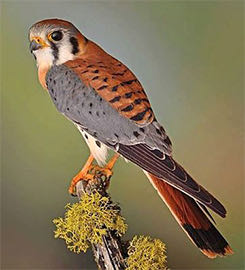 Two others more commonly seen in suburban and city backyards are accipiters: Cooper's Hawks and Sharp-shinned Hawks that prey on songbirds, doves, woodpeckers, and the like. Except for the kestrel, we've seen each of these raptors just outside
Two others more commonly seen in suburban and city backyards are accipiters: Cooper's Hawks and Sharp-shinned Hawks that prey on songbirds, doves, woodpeckers, and the like. Except for the kestrel, we've seen each of these raptors just outside 
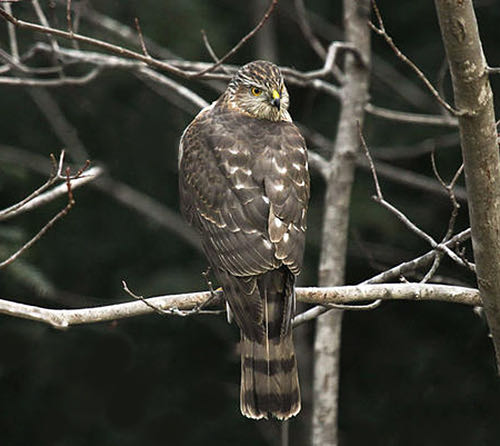


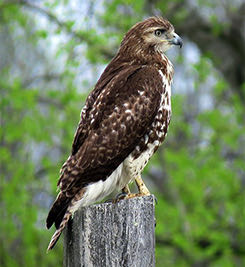 .
. 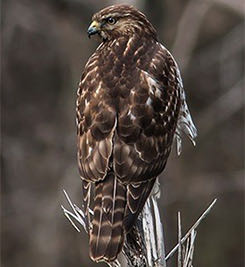
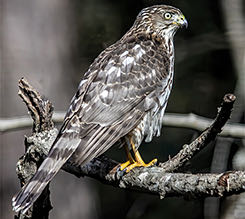 .
. 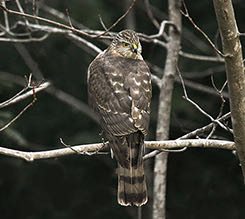
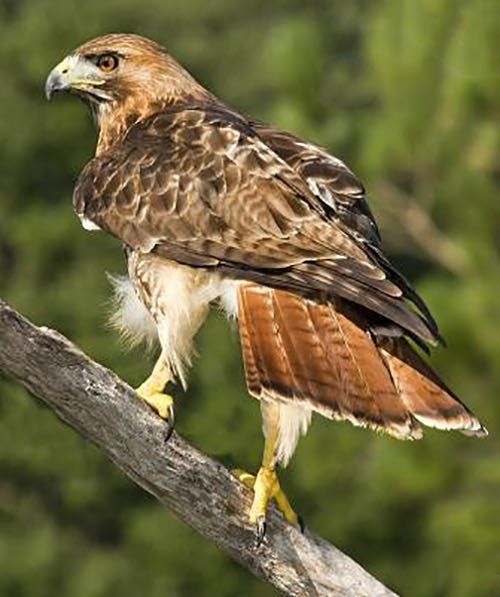
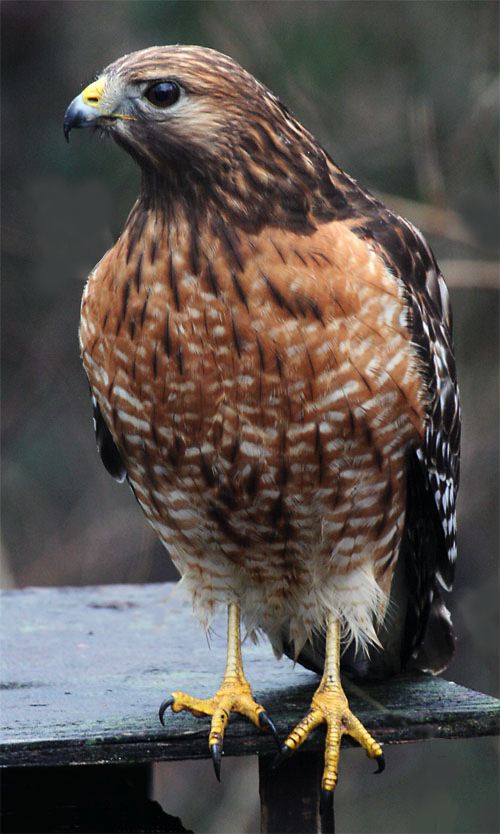












 Oct 15 to Mar 15:
Oct 15 to Mar 15: